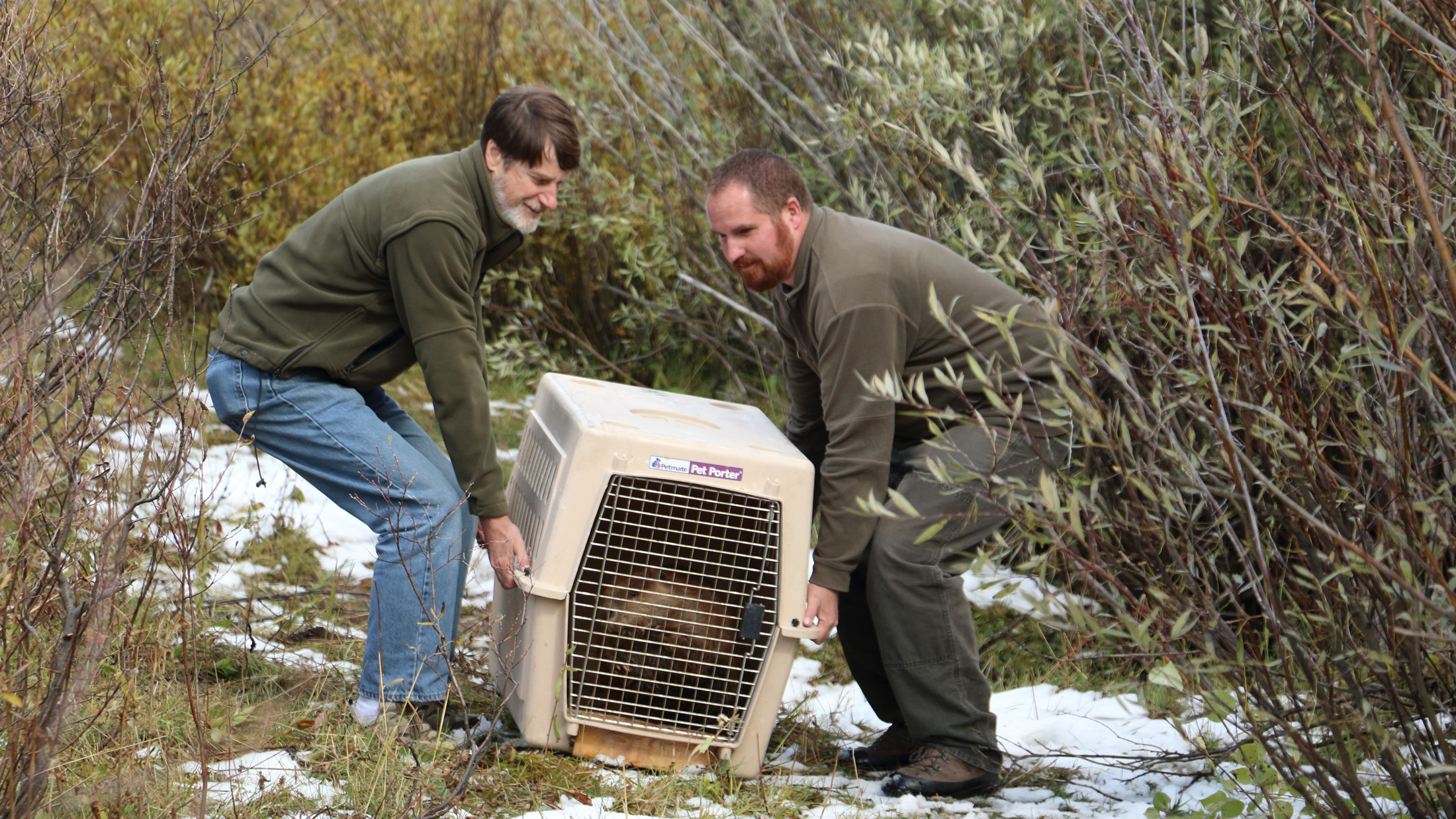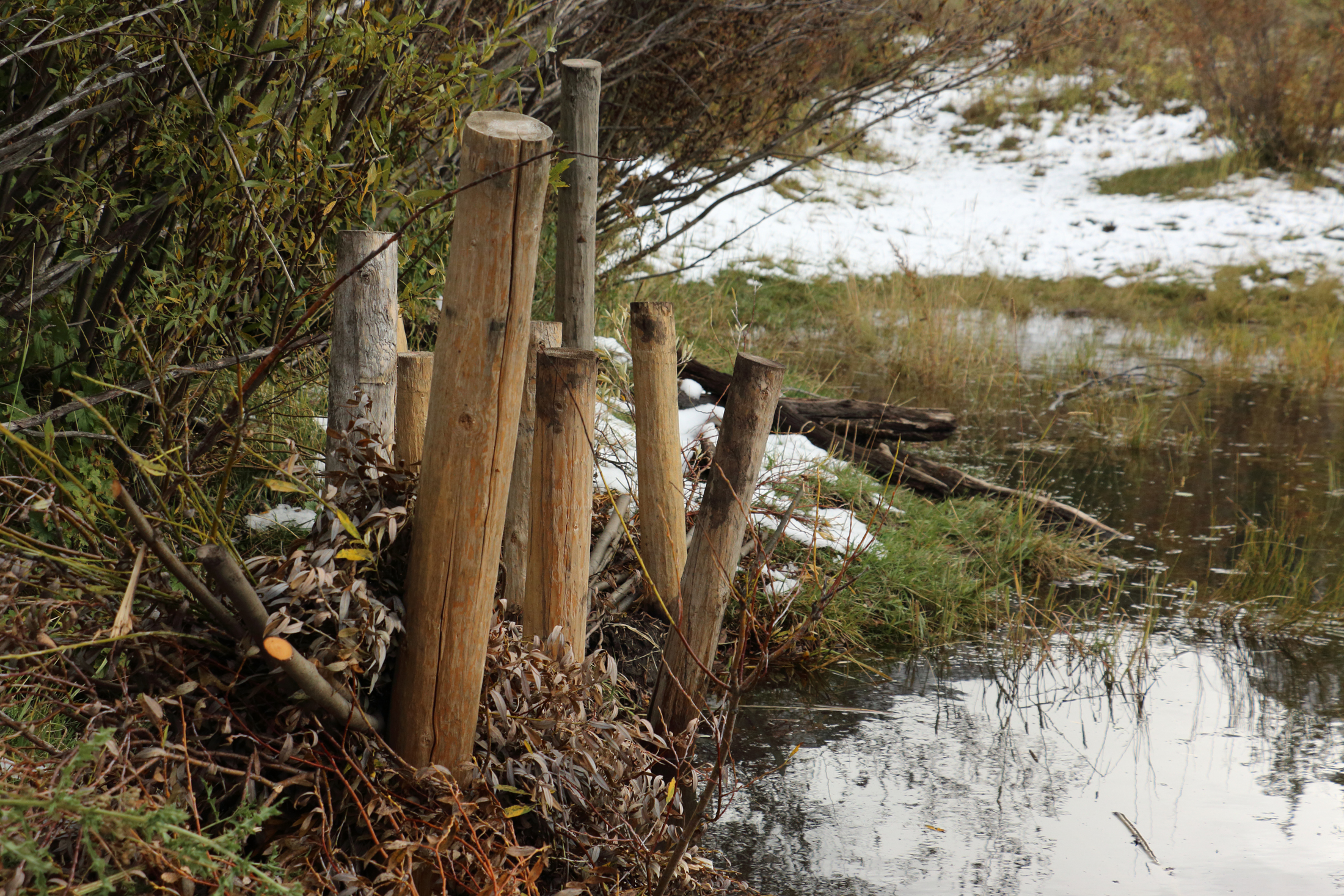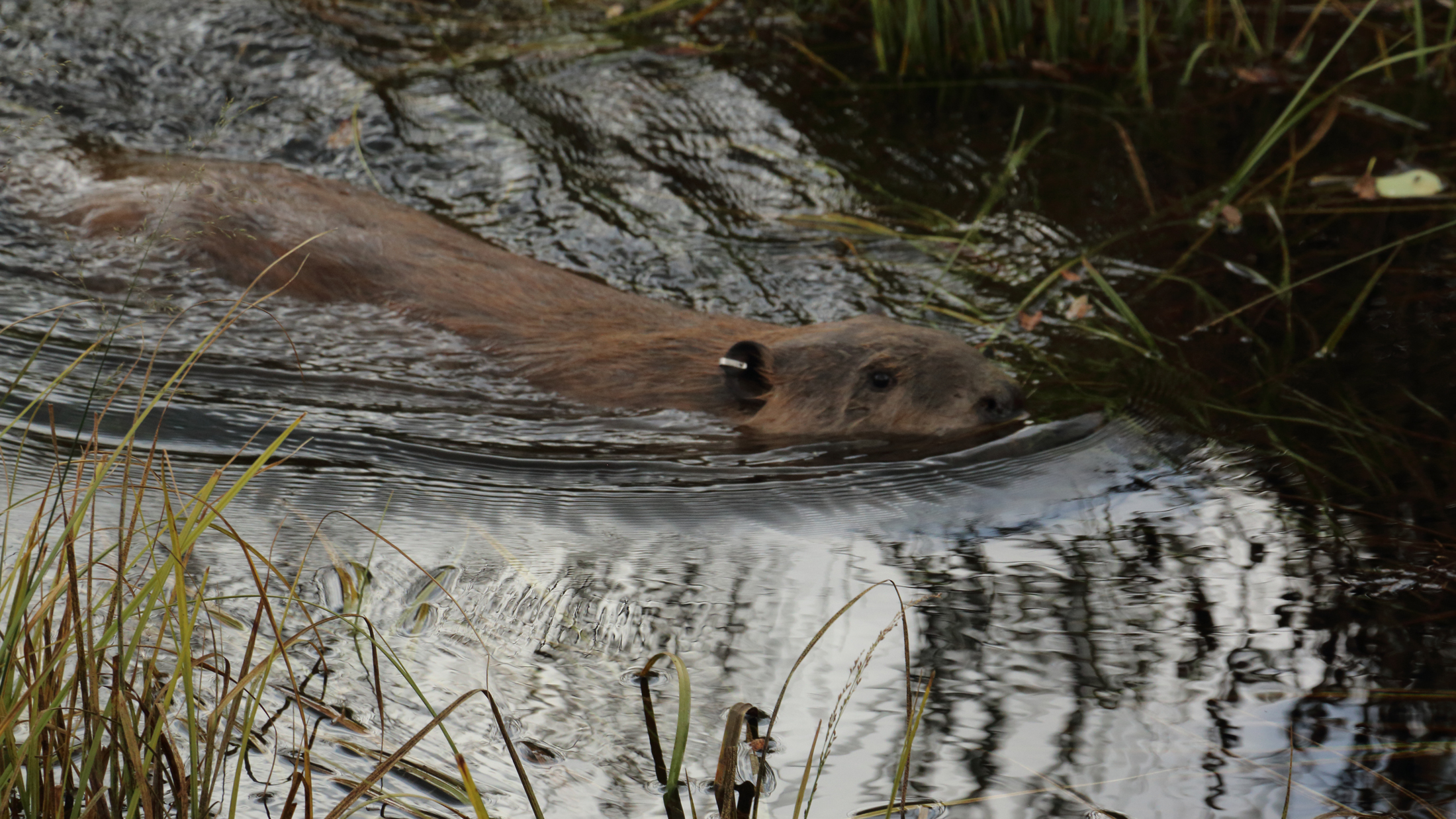I drop the tailgate and eagerly lean the top half of my body toward the bed. I followed this truck for two hours watching two dog crates bounce in the back, but dogs aren’t in the cages. Beavers are. It’s moving day and these two beavers have a new home to build in Idaho’s backcountry.
“Beavers are really nature’s engineers and they do a really good job at what they do,” says James Brower, Idaho Department of Fish and Game volunteer services coordinator. “We love beaver and we love what beaver do.”
But until recently, the same department now moving beaver, was issuing kill permits to eliminate nuisance dam builders. Beavers hear water running and they run to stop it. They also chew, flooding roads with trees toppled by their teeth. Roads close when under water and those trees might be your windbreak.
“Usually we would solve the problem by issuing a kill permit to the land owner. Instead, we’re now trying to work with landowners,” Brower says. “It’s more preferable for us to move that beaver live and have it do its job somewhere else where it’s not causing a problem.”
Through the caged front of the crate, the jostled animals are alert with eyes wide. They’re two of 19 moved in one summer. Traveling by truck is foreign for all of them, but mild compared to the transplant tactics of the 1950s when Idaho’s wildlife biologists dropped beaver in the backcountry via plane and parachute.
“It’s crazy, right? It’s not something people do on a normal basis,” Brower says. “I would have loved to have been a part of that.”

Old footage of the operation is worth seeing and hearing. Narrator with classic, stern voice delivers scripted lines. Grainy film clips spliced together show beaver drop. Box cracks open on impact. Ball of fur lumbers out.
“Pretty fascinating time for sure,” Brower says. “You could definitely get them into places you would not get them otherwise.”
There are more roads today than there were 80 years ago. Most beaver transplants are done within a one-to-two-mile hike from the truck. The two I’m watching are going into Duck Creek. A small tributary near the Idaho-Montana border. Brook trout and cutthroat trout find Duck Creek, but they don’t stay. The creek runs dry most summers and the few parts that puddle are so shallow they freeze in winter.
“The beavers are creating ponds. They’re making places for fish to go,” Brower says. “A lot of people see a beaver dam and they see that as a fish obstruction, but they’re really not. Water flows in and out of a beaver dam. Fish love it.”
Brower recruits volunteers to build beaver lodges and beaver dam analogs before transplants arrive. Beaver dam analogs (BDAs) are man-made clogs on creeks created with posts, mud and willow. The Nature Conservancy also engineers similar BDAs in the West. Human hands can’t make the structure last, but wild paws can.

“The problem is the upkeep. After a month or even a few weeks on their own, they’re going to fail,” Brower says. “The water is going to eat through and it’s gone. But if we put a beaver in that spot, they’re going to look at that artificial beaver dam, hopefully, and want to repair it. Make it better than we do. We know we’re not great at it. Beavers are king when it comes to dam building.”
Transplants, at an average cost of $250 per animal, are moved in pairs or family groups. A solo beaver won’t stay put. For this habitat experiment to work, the beaver has to stay put. Well, as put as any busy animal will. A radio tag on their tail tells Brower if they stay. Sending in a male and female together should help.
I watch the pair leave the crates and transition from dry ground to wet. They sink, surface and swim with purpose issuing a firm tail slap as they survey the pool’s perimeter. They’re probably gauging workload versus motivation.
“We really want them to set up shop and transform that habitat and make it a little better for everything,” Brower says. “Beaver create habitat for not only fish but also for deer, elk, moose and bear. Pretty much everything needs water and places to drink. There’s no doubt in my mind this benefits everybody.”
Outdoor journalist Kris Millgate is based in Idaho Falls, Idaho. See more of her work at www.tightlinemedia.com




Just north of the western edge of Yellowstone Park there is a beaver complex and associated wetland along the Gallatin River. The beavers created this wetland masterpiece that included a number of dams that created habitat for birds, fish, mammals and other wildlife. From pullouts along U.S. Hwy 191 that overlook this wetland, one can see moose, mule deer, coyotes, beaver, muskrat, sandhill cranes, ducks, wading birds, bald eagles and other raptors. For photos of this area, including some of the wildlife. After about ten years, some of the ponds silted in, so the beavers moved their complex a bit downstream. The area continues to be a wildlife magnet although there is no longer sufficient water depth in the old ponds to attract the diving duck species. For a great survey of the many benefits of beavers and efforts to restore them, I can highly recommend Ben Goldfarb’s recent book, EAGER: THE SURPRISING, SECRET LIFE OF BEAVERS AND WHY THEY MATTER.
Beavers design, build and maintain watershed improvements at a small fraction of the cost of other methods. The near exterpation in the 1800’s was the first major alteration to our landscape and the impacts are still felt regionwide. Kudos to the people and organizations leading the way to recovery using nature’s engineers.
We have newly arrived beavers at our lake. ( I know because they cut down one of my trees.) How can I have them removed and relocated? ( I live in NY state).
There is so much to think about with animals and wildlife conservation. It can be overwhelming at times as there is so much to do. This was so much nicer than issuing a kill license. Just goes to prove it doesn’t have to be that way. Thanks for all you are doing!
These adorable beavers remind me of my pet guinea pigs. I can’t believe the laid back personalities of these creatures after being parachuted from a plane! Thank you to all of the wonderful people who care for them and our environment. God bless.
Thank you to the men and women who help these adorable animals.